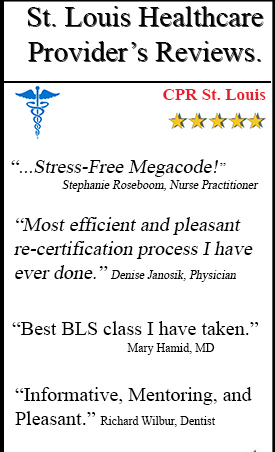Microbial Metabolism – Microbiology Lecture Outlines
Call Us Now
Get the Best CPR Class in St. Louis Today!
Microbiology
Microbial Metabolism
I. Metabolism – all chemical reactions (making or breaking bonds) in a cell
A. Catabolism – breaking down; breaking bonds
1. Hydrolytic reactions
2. Exergonic – release energy
B. Anabolism – building molecules; making bonds
1. Dehydration synthesis reactions
Call Us Now
Get the Best CPR Class in St. Louis Today!
2. Endergonic – consume energy
C. Catabolic reactions provide energy to drive anabolic reactions
D. Energy of Activation – energy required to make a reaction go (make or break bond)
E. Enzymes
1. Most are protein and may require a cofactor (metal ion or vitamin)
2. Lowers energy of activation necessary to make or break a bond
3. Biologic Catalyst – speeds up rate of reaction in cells
4. Provide Active Site for smaller substrates to bind and react
5. Reused
6. Affected by pH and temperature (denatured)
F. Cofactors – make enzymes functional
1. Metallic cofactors – iron, copper, magnesium, zinc, etc
2. Coenzymes – organic cofactors
a. Vitamins
b. Transfer hydrogen atoms, electrons, and other functional groups
c. NAD+ and NADP+ (from B vitamin niacin)
1) Electron carriers
d. FAD (from B vitamin riboflavin)
1) Electron carriers
G. Mechanism of Enzyme Action
1. Substrate binds to the Active Site of Enzyme
a. Active Site is specific for substrate
b. Enzyme-Substrate (ES) Complex is formed
2. Bonds of substrate(s) are rearranged, broken or made
3. Enzyme releases Products
a. Enzyme is reused
Enzyme (E) + Substrate (S) ————à ES Complex ———–à E + Products
H. Factors Influencing Enzyme Action
1. Non-optimal temperature and pH ranges denature enzymes
2. Enzyme Inhibitors
a. Competitive Inhibitors – bind to active site of enzyme, compete with substrate
—————————–
Example of Competitive Inhibition: Sulfa drug (Sulfanilamide)
1. PABA (para-aminobenzoic acid) is a nutrient used by bacteria to make folic acid
2. Sulfanilamide inhibits the enzyme that converts PABA to folic acid; no folic acid is produced
3. Without folic acid bacteria cannot grow
4. Humans do not use PABA to make folic acid, so we are not harmed
————————————–
b. Noncompetitive Inhibitors
1) Do not bind to active site, but instead bind to allosteric site
a. Allosteric site is another region of enzyme
2) Causes active site to change shape
NOTE: Microbial Enzymes in Disease
1. Endoenzyme – used inside the cell for metabolism
2. Exoenzymes – secreted out of cell to break down food / harmful chemicals
a. Amylase, penicillinase
b. Contribute to pathogenicity; bacterial toxins or virulence factors
c. Streptococcus pyogenes – throat and skin pathogen
1) Streptokinase which aid in invasion of wounds
2) Streptolysin – lyses RBC’s and tissues
d. Pseudomonas aeruginosa – respiratory and skin pathogen
a. Elastase and collagenase break down our connective tissue
II. Making Useable Energy (ATP) from Nutrients (Glucose)
A. ATP
1. Energy carrying molecule in cells
2. Provides energy for all cellular work
3. Without ATP cell would die because it cannot do anything, i.e. no energy
4. Has unstable, energy bonds that can easily be broken
a. When unstable bond (i.e. high-energy phosphate bond) is broken, energy is released and used by cell to do work
b. 1 glucose has more energy than 1 ATP, but cell cannot access the energy directly to do work.
c. Therefore, cell has to exact the energy from glucose and transfer it to ATP.
d. ATP stores and transfers energy from catabolic reactions to drive anabolic reactions
B. Structure of ATP
1. Adenosine Triphosphate (ATP)
2. ATP is made of an adenosine (adenine nucleotide + the sugar ribose) and 3 phosphates
3. ATP ————–à ADP + Pi + energy
4. ADP + Pi + energy ————–à ATP
C. Extracting Energy from Glucose to Make ATP in Bacteria
2 Processes
a. Cellular Respiration and Fermentation
1. Aerobic Cellular Respiration – 3 stages
a. Glycolysis
1) Occurs with or without oxygen
2) Used by aerobes and anaerobes to generate ATP
3) Glucose ———à 2 pyruvic acid + 2 ATP + 2 NADH
4) NAD+ is reduced to NADH; each NADH makes 3 ATP
b. Krebs Cycle
1) Before entering Krebs, 2 Pyruvic acid —CoA—–à 2 acetyl CoA
a. 2 CO2 and 2 NADH are produced
2) 2 Acetyl CoA enters Krebs
a. 4 CO2, 6 NADH, 2 FADH2, 2 ATP
c. Electron Transport
1) Location
a. Eukaryotes – mitochondrial inner membrane
b. Prokaryotes – cell membrane
2) Requires O2 as final electron acceptor
3) Site where NADH and FADH2 transfer the energy that they captured
from glucose to make ATP
4) Majority of ATP is produced here
a. 10 NADH @ 3 ATP/NADH = 30 ATP
b. 2 FADH2 @ 2 ATP/FADH2 = 4
__________________________________
Total = 34 ATP for electron transport
d. Total ATP
1) Glycolysis = 2 ATP
2) Krebs = 2 ATP
3) Electron Transport = 34 ATP
__________________________________
Total = 38 ATP / glucose molecule
2. Fermentation
a. Does not require oxygen
b. Pyruvic acid ———-à end products
c. Various End Products
1) Ethanol (wine from grapes)
2) CO2 and H2
3) Lactic acid (cheese / yogurt from milk)
4) Acetic acid (vinegar from ethanol)
d. 2 ATP are produced in glycolysis
D. Using Fats and Proteins for Energy
1. Bacteria use exoenzymes to break down proteins and fats to components small enough
to pass cell membrane
a. Protein —-proteases——— amino acids
b. Triglycerides (fats) —lipases———– glycerol and fatty acids
2. Amino acids, glycerol and fatty acids are used in glycolysis and Krebs cycle to
generate ATP






